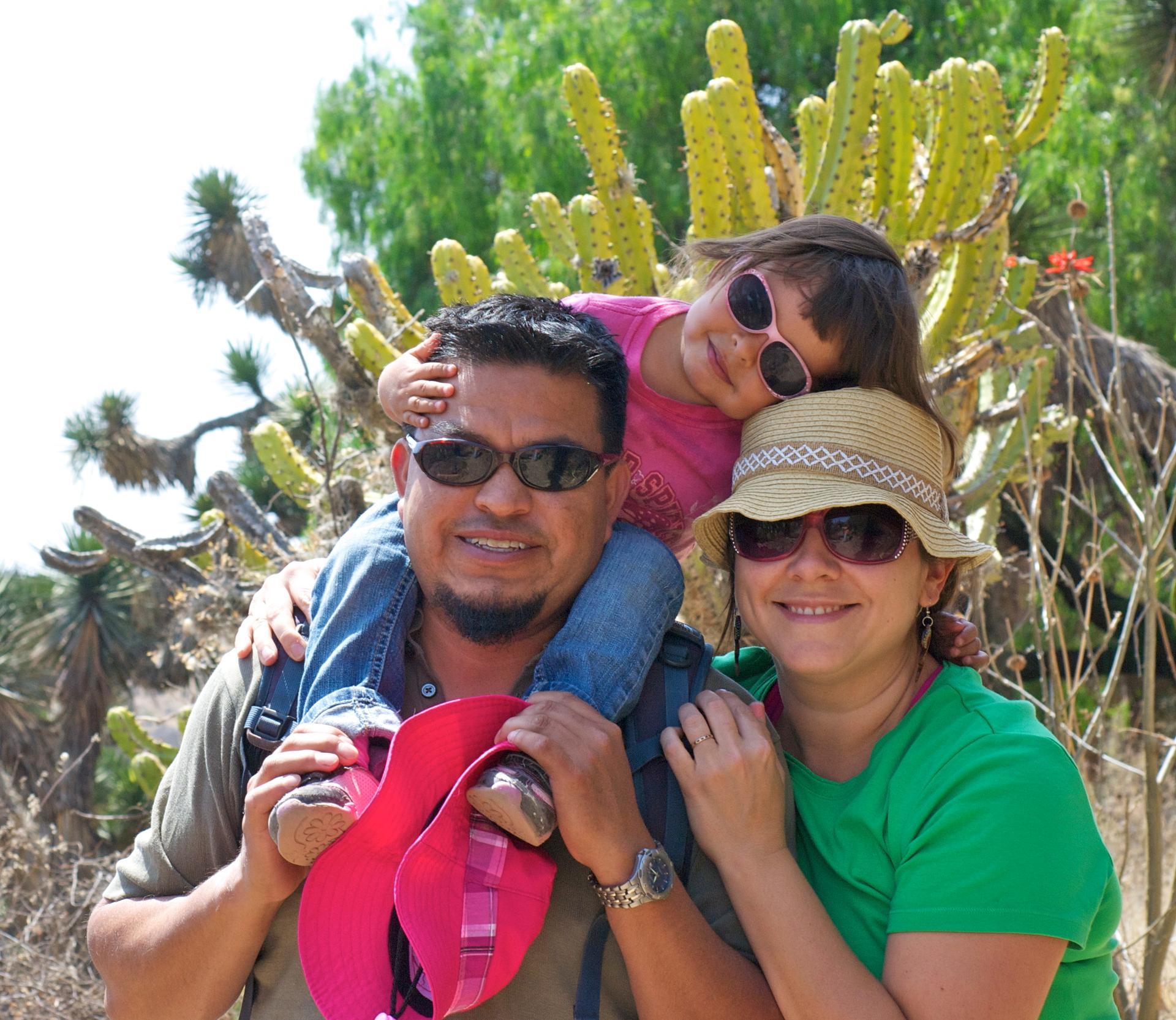American citizens, in love and in exile, are waiting for immigration reform
American citizen Nicole Salgado, husband Margo Reséndiz, and their 3-year old daughter, are seven years into a 10-year exile from the US, living in the Mexican state of Querétaro.
Nathaniel Hoffman never set out to write a love story. But his new book “Amor & Exile” is just that. It chronicles married couples who share a trait — one spouse is American, the other is an undocumented immigrant.
One couple in the book is Juan and Veronica. Hoffman met Veronica, a nurses’ aide, at a rally in Idaho.
“And she stood up with a sonogram picture that she’d gotten that day and said that her fiancé was behind bars, and she didn’t know if she’d see him again,” says Hoffman.
The next day, the couple got married. “She was able to visit, and they had a pastor come and do a ceremony through the bars of the Ada county jail,” says Hoffman.
Veronica’s husband was then deported to Mexico. She stayed in Idaho with their two daughters.
Couples like Veronica and Juan have the right to get married. And US citizens have the right to sponsor undocumented spouses to live in the US.
“But in order for that to be carried through, they have to leave the country, which triggers some kind of ban from coming back,” says Hoffman.
It can happen like this: If undocumented immigrants marrying US citizens want to legalize their status here, they typically have to go back to their home countries to start the process. It means they must come clean to US officials that they entered America illegally. And that can trigger the bad news: a 1996 law that bans immigrants — who’ve crossed over illegally — from re-entering the US for 5, 10, 20 years, or even permanently. It depends on the number of offenses.
The law was designed to discourage people from entering the US illegally.
It can even separate newly-married couples. And, for some of them, the only alternative to living apart is to leave the US entirely.
“We had a going away party at a friend’s house, it was very sad,” said Nicole Salgado, a US citizen who left California for Mexico seven years ago. She now lives in Querétaro, a state in central Mexico.
Salgado is an Ivy League grad, from a working class suburb of Syracuse, New York. Her husband, Margo Reséndiz, is Mexican. He moved to California without papers to work in construction. The couple found it tough to build a life together in California.
“We were just really concerned that Margo could get pulled over and [detained] at any time. We were really sort of playing a risky game staying there,” says Salgado. "Margo really wanted to build a house. It wasn’t looking very realistic for us to buy a home either, because he had to co-sign and he didn’t have papers.”
The couple is now in year 7 of a 10-year exile. Nicole and their daughter can travel to the US freely — just not Margo. He’s serving his punishment for crossing the border illegally when he was a young man, hidden in the trunk of a car. Immigration officers told Margo he’d face a 10-year ban if he tried again. He did anyway.
Some undocumented immigrants can get the ban waived. But not Margo, because he entered illegally more than once.
Salgado co-wrote the book “Amor & Exile” from Querétaro. The chapters flip between Nathaniel Hoffman’s reporting from Idaho and Salgado’s first-person story of her self-imposed exile.
“I think I was sort of socially isolated for a while, maybe the first year, couple of years,” says Salgado, who also says the adjustment got easier over time.
I asked Salgado if they’d apply to return to the US in three years when the 10-year ban against Margo expires.
“Well, it’s a really hard choice and I get asked it all the time,” she says.
“The thing I think of constantly is I just would love the choice. Obviously, we have our home here now that we’ve built, we have friends, we have a social circle. But the economic situation is very tenuous, because [we’re] just not making it on a Mexico income.”
Salgado realizes that her husband broke the law when he crossed the border twice, illegally. But she doesn’t think the current law is a just one.
“I have to say I think it’s draconian,” says Salgado. “I mean I understand the need for rule of law, order, an orderly immigration system. But I also do feel like it’s quite a bit of time to serve for a civil infraction. It seems like the punishment should fit the crime.”
The plight of married couples like Salgado has flown under the radar during the immigration debate. Recently, Salgado and her co-author Nathanial Hoffman went to Washington. They rolled a dolly stacked with their new book through the halls of the US Capitol handing out copies to lawmakers.
Salgado hopes Congress will consider the case of exiled Americans like her. If not, she’s got a date circled on her calendar — in September of 2016. That’s when her husband can apply to come back to the US with her.*
*Updated: A previous version of this story stated that Nicole Salgado marked September of 2016 as when her husband could return to the US with her. In September of 2016, Salgado's husband can apply to return to the US. We regret the error.
We want to hear your feedback so we can keep improving our website, theworld.org. Please fill out this quick survey and let us know your thoughts (your answers will be anonymous). Thanks for your time!
